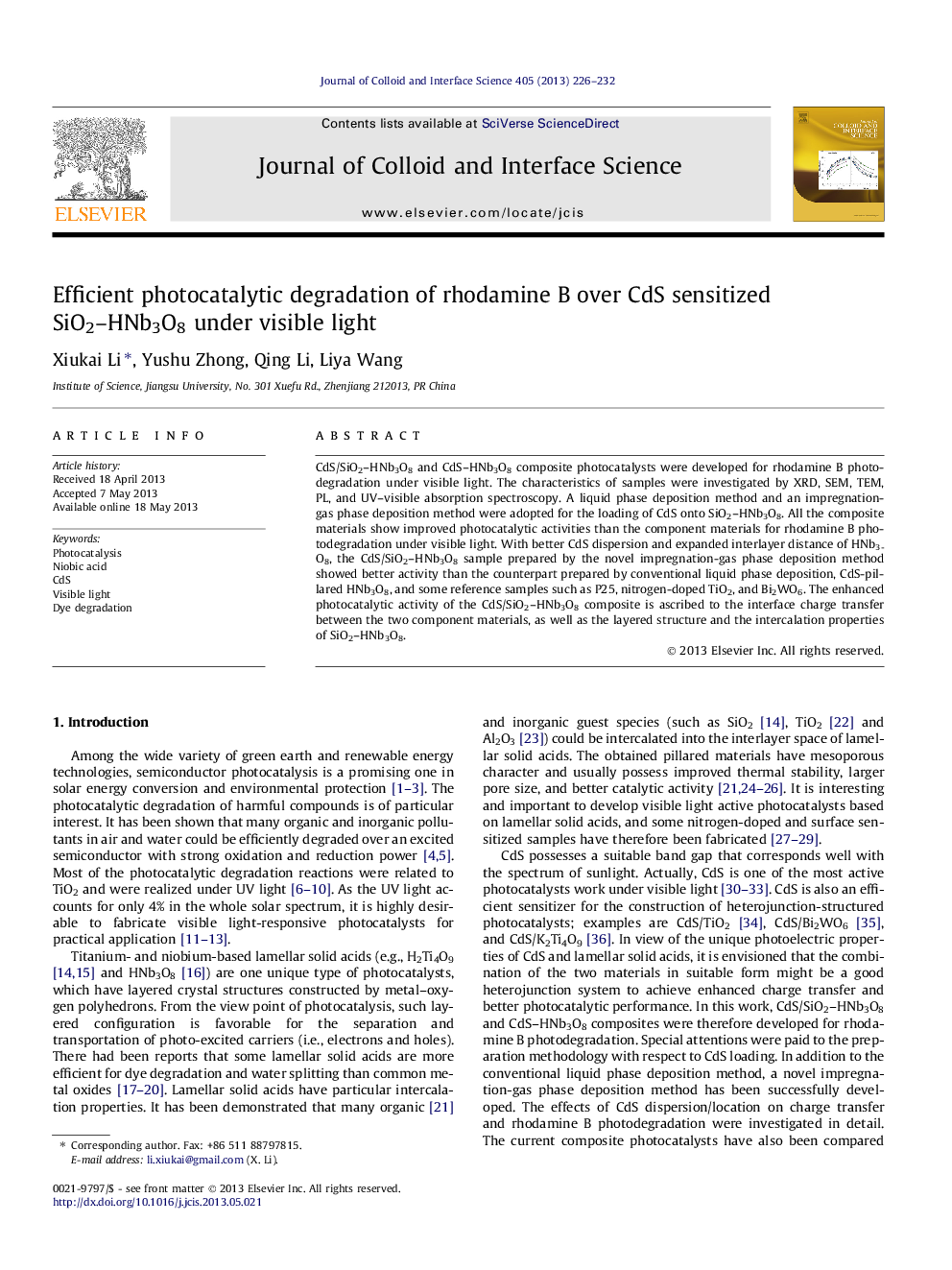| Article ID | Journal | Published Year | Pages | File Type |
|---|---|---|---|---|
| 607656 | Journal of Colloid and Interface Science | 2013 | 7 Pages |
•CdS/SiO2–HNb3O8 composites were developed for visible light photocatalysis.•A novel impregnation-gas phase deposition method was developed for CdS loading.•The composite photocatalysts are highly efficient for rhodamine B photodegradation.•The enhanced photocatalytic activity is ascribed to the synergetic effects.
CdS/SiO2–HNb3O8 and CdS–HNb3O8 composite photocatalysts were developed for rhodamine B photodegradation under visible light. The characteristics of samples were investigated by XRD, SEM, TEM, PL, and UV–visible absorption spectroscopy. A liquid phase deposition method and an impregnation-gas phase deposition method were adopted for the loading of CdS onto SiO2–HNb3O8. All the composite materials show improved photocatalytic activities than the component materials for rhodamine B photodegradation under visible light. With better CdS dispersion and expanded interlayer distance of HNb3O8, the CdS/SiO2–HNb3O8 sample prepared by the novel impregnation-gas phase deposition method showed better activity than the counterpart prepared by conventional liquid phase deposition, CdS-pillared HNb3O8, and some reference samples such as P25, nitrogen-doped TiO2, and Bi2WO6. The enhanced photocatalytic activity of the CdS/SiO2–HNb3O8 composite is ascribed to the interface charge transfer between the two component materials, as well as the layered structure and the intercalation properties of SiO2–HNb3O8.
Graphical abstractFigure optionsDownload full-size imageDownload high-quality image (62 K)Download as PowerPoint slide
